Cover
About This eBook
Title Page
Copyright Page
Praise for Effective Python
Dedication Page
Contents
Preface
What This Book Covers
Conventions Used in This Book
Where to Get the Code and Errata
Acknowledgments
About the Author
1. Pythonic Thinking
Item 1: Know Which Version of Python You're Using
Item 2: Follow the PEP 8 Style Guide
Item 3: Know the Differences Between bytes, str, and unicode
Item 4: Write Helper Functions Instead of Complex Expressions
Item 5: Know How to Slice Sequences
Item 6: Avoid Using start, end, and stride in a Single Slice
Item 7: Use List Comprehensions Instead of map and filter
Item 8: Avoid More Than Two Expressions in List Comprehensions
Item 9: Consider Generator Expressions for Large Comprehensions
Item 10: Prefer enumerate Over range
Item 11: Use zip to Process Iterators in Parallel
Item 12: Avoid else Blocks After for and while Loops
Item 13: Take Advantage of Each Block in try/except/else/finally
2. Functions
Item 14: Prefer Exceptions to Returning None
Item 15: Know How Closures Interact with Variable Scope
Item 16: Consider Generators Instead of Returning Lists
Item 17: Be Defensive When Iterating Over Arguments
Item 18: Reduce Visual Noise with Variable Positional Arguments
Item 19: Provide Optional Behavior with Keyword Arguments
Item 20: Use None and Docstrings to Specify Dynamic Default Arguments
Item 21: Enforce Clarity with Keyword-Only Arguments
3. Classes and Inheritance
Item 22: Prefer Helper Classes Over Bookkeeping with Dictionaries and Tuples
Item 23: Accept Functions for Simple Interfaces Instead of Classes
Item 24: Use @classmethod Polymorphism to Construct Objects Generically
Item 25: Initialize Parent Classes with super
Item 26: Use Multiple Inheritance Only for Mix-in Utility Classes
Item 27: Prefer Public Attributes Over Private Ones
Item 28: Inherit from collections.abc for Custom Container Types
4. Metaclasses and Attributes
Item 29: Use Plain Attributes Instead of Get and Set Methods
Item 30: Consider @property Instead of Refactoring Attributes
Item 31: Use Descriptors for Reusable @property Methods
Item 32: Use __getattr__, __getattribute__, and __setattr__ for Lazy Attributes
Item 33: Validate Subclasses with Metaclasses
Item 34: Register Class Existence with Metaclasses
Item 35: Annotate Class Attributes with Metaclasses
5. Concurrency and Parallelism
Item 36: Use subprocess to Manage Child Processes
Item 37: Use Threads for Blocking I/O, Avoid for Parallelism
Item 38: Use Lock to Prevent Data Races in Threads
Item 39: Use Queue to Coordinate Work Between Threads
Item 40: Consider Coroutines to Run Many Functions Concurrently
Item 41: Consider concurrent.futures for True Parallelism
6. Built-in Modules
Item 42: Define Function Decorators with functools.wraps
Item 43: Consider contextlib and with Statements for Reusable try/finally Behavior
Item 44: Make pickle Reliable with copyreg
Item 45: Use datetime Instead of time for Local Clocks
Item 46: Use Built-in Algorithms and Data Structures
Item 47: Use decimal When Precision Is Paramount
Item 48: Know Where to Find Community-Built Modules
7. Collaboration
Item 49: Write Docstrings for Every Function, Class, and Module
Item 50: Use Packages to Organize Modules and Provide Stable APIs
Item 51: Define a Root Exception to Insulate Callers from APIs
Item 52: Know How to Break Circular Dependencies
Item 53: Use Virtual Environments for Isolated and Reproducible Dependencies
8. Production
Item 54: Consider Module-Scoped Code to Configure Deployment Environments
Item 55: Use repr Strings for Debugging Output
Item 56: Test Everything with unittest
Item 57: Consider Interactive Debugging with pdb
Item 58: Profile Before Optimizing
Item 59: Use tracemalloc to Understand Memory Usage and Leaks
Index
Code Snippets
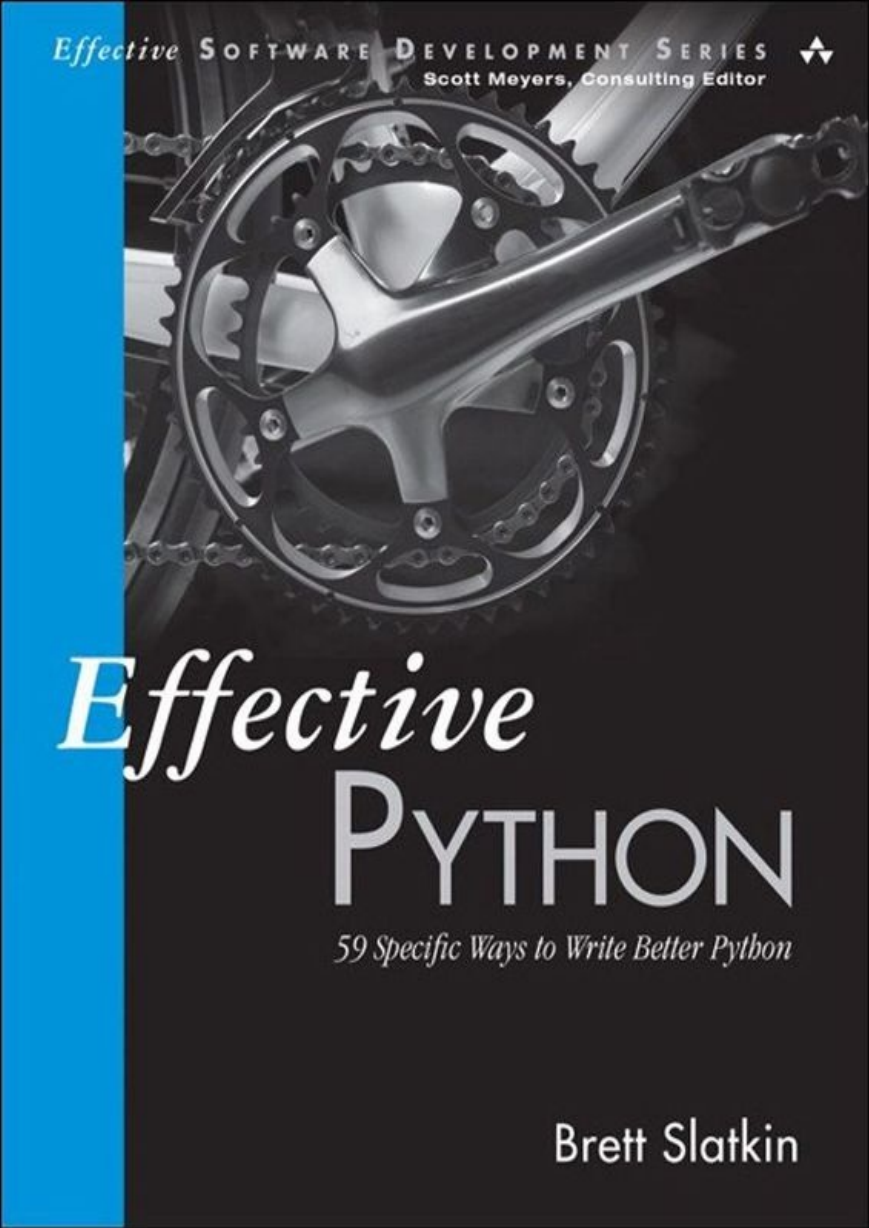

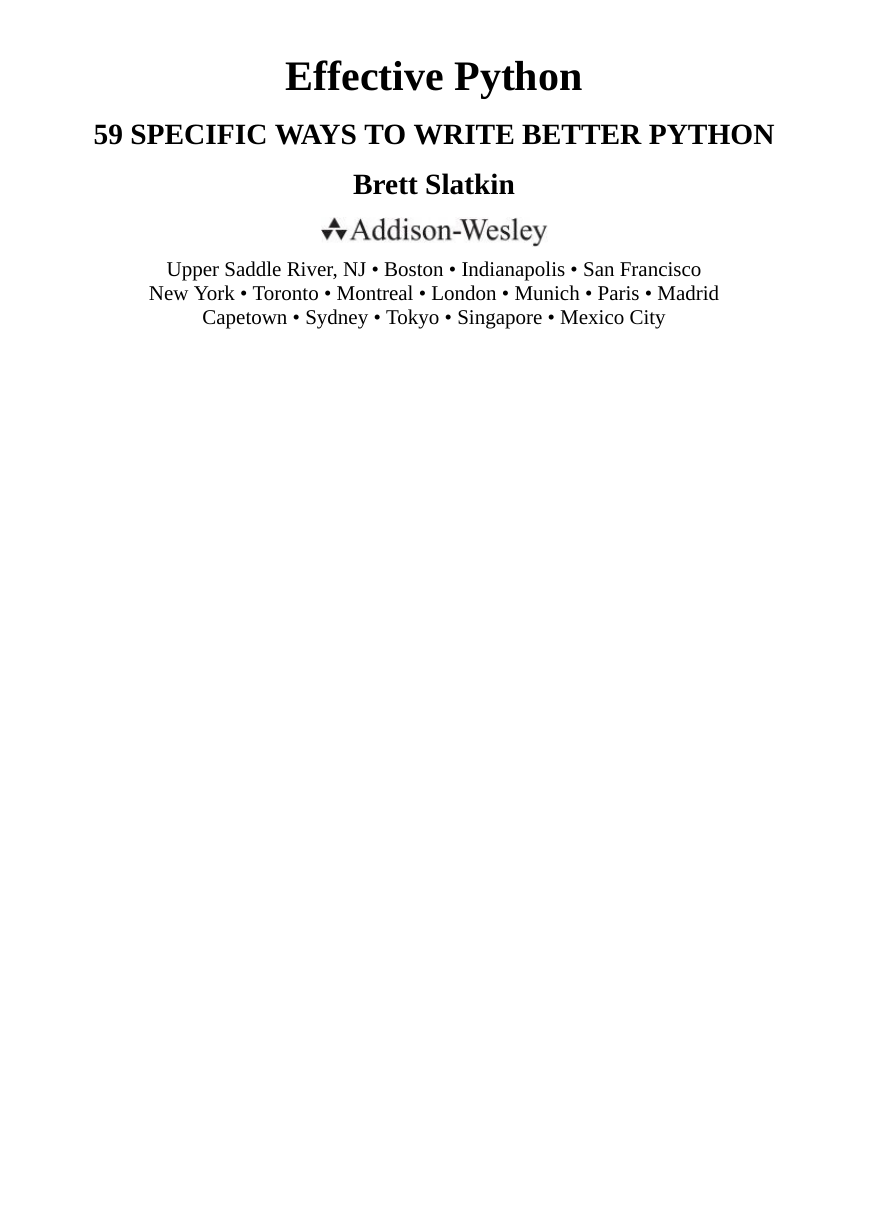
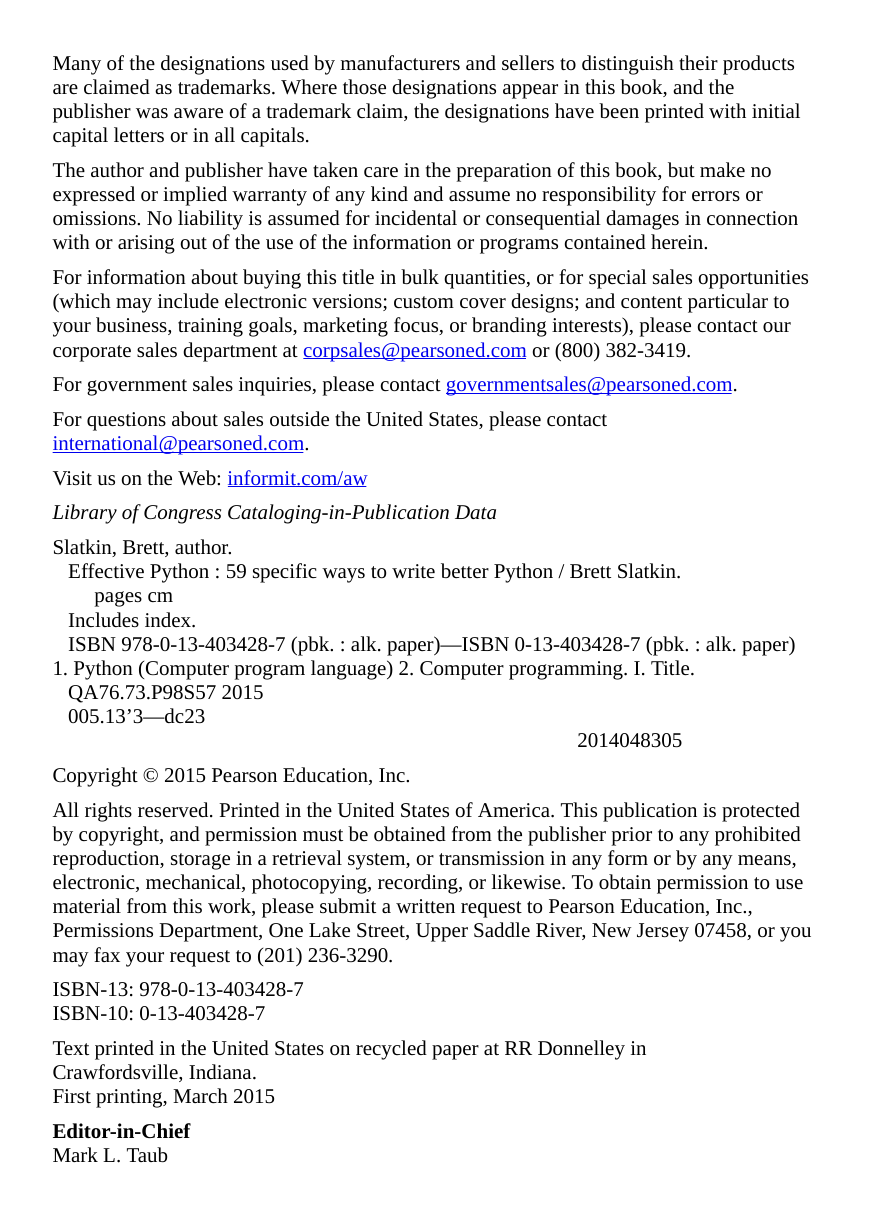
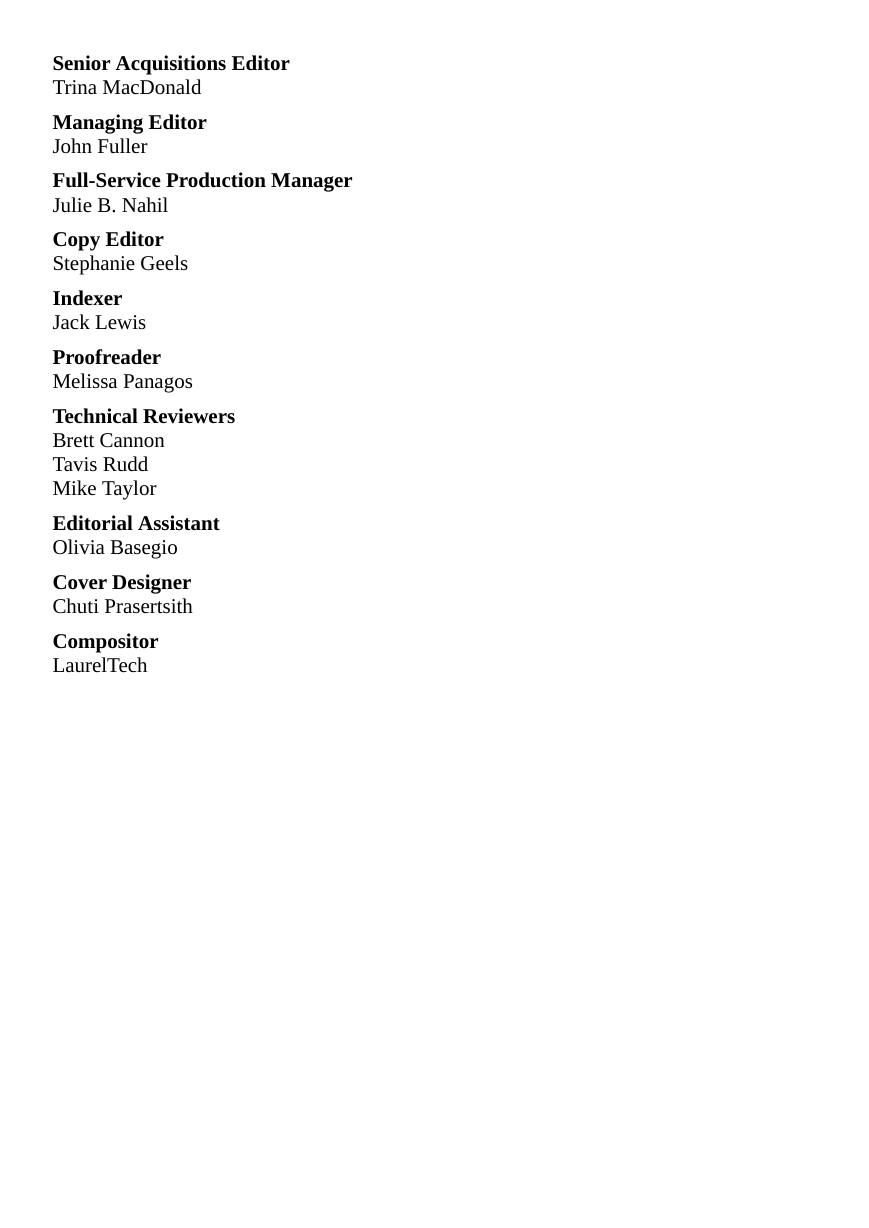

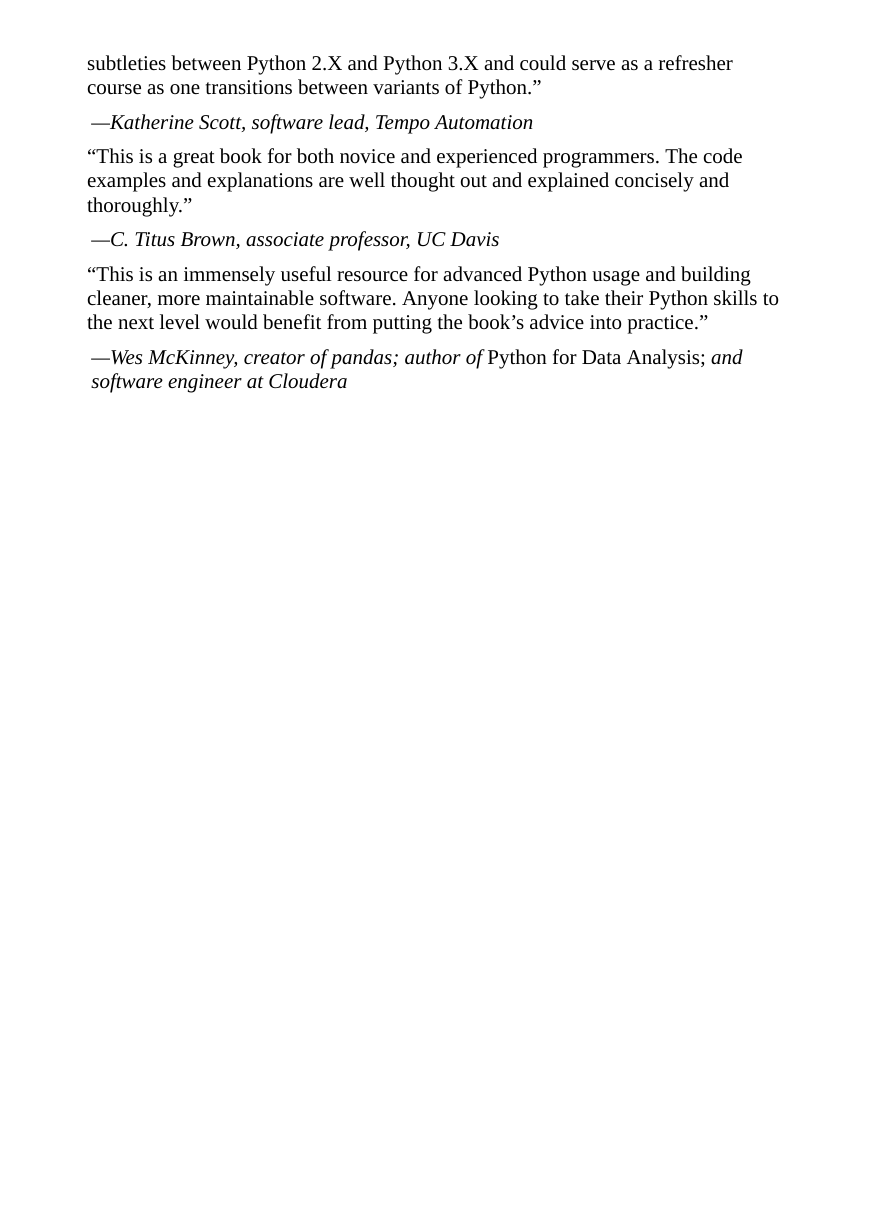
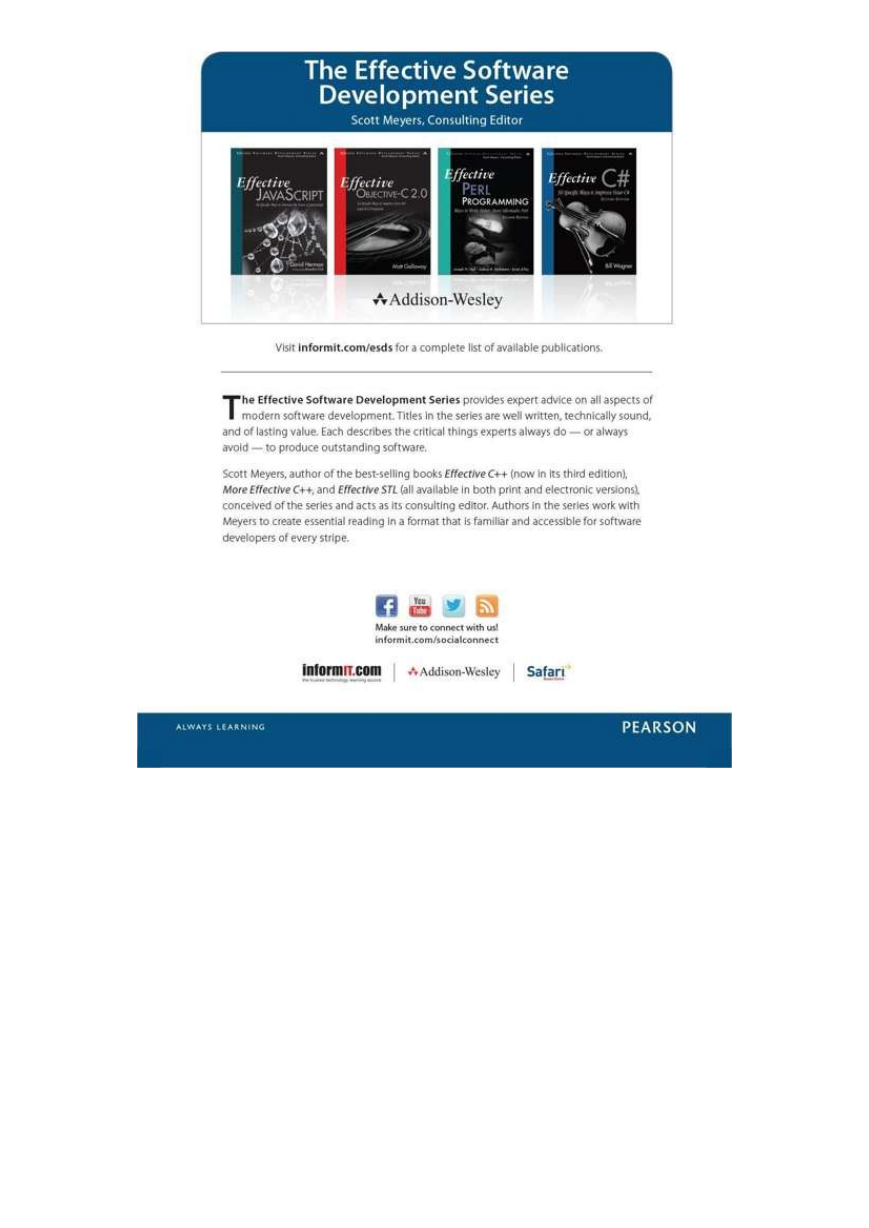








 2023年江西萍乡中考道德与法治真题及答案.doc
2023年江西萍乡中考道德与法治真题及答案.doc 2012年重庆南川中考生物真题及答案.doc
2012年重庆南川中考生物真题及答案.doc 2013年江西师范大学地理学综合及文艺理论基础考研真题.doc
2013年江西师范大学地理学综合及文艺理论基础考研真题.doc 2020年四川甘孜小升初语文真题及答案I卷.doc
2020年四川甘孜小升初语文真题及答案I卷.doc 2020年注册岩土工程师专业基础考试真题及答案.doc
2020年注册岩土工程师专业基础考试真题及答案.doc 2023-2024学年福建省厦门市九年级上学期数学月考试题及答案.doc
2023-2024学年福建省厦门市九年级上学期数学月考试题及答案.doc 2021-2022学年辽宁省沈阳市大东区九年级上学期语文期末试题及答案.doc
2021-2022学年辽宁省沈阳市大东区九年级上学期语文期末试题及答案.doc 2022-2023学年北京东城区初三第一学期物理期末试卷及答案.doc
2022-2023学年北京东城区初三第一学期物理期末试卷及答案.doc 2018上半年江西教师资格初中地理学科知识与教学能力真题及答案.doc
2018上半年江西教师资格初中地理学科知识与教学能力真题及答案.doc 2012年河北国家公务员申论考试真题及答案-省级.doc
2012年河北国家公务员申论考试真题及答案-省级.doc 2020-2021学年江苏省扬州市江都区邵樊片九年级上学期数学第一次质量检测试题及答案.doc
2020-2021学年江苏省扬州市江都区邵樊片九年级上学期数学第一次质量检测试题及答案.doc 2022下半年黑龙江教师资格证中学综合素质真题及答案.doc
2022下半年黑龙江教师资格证中学综合素质真题及答案.doc